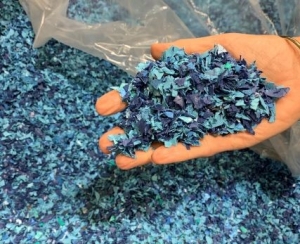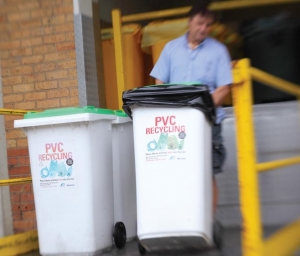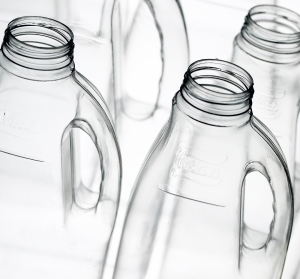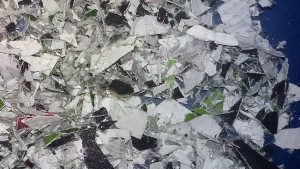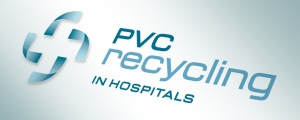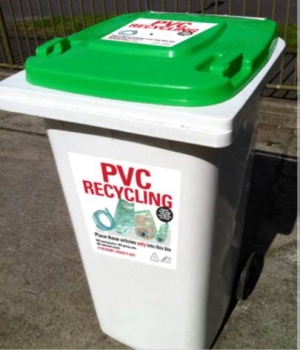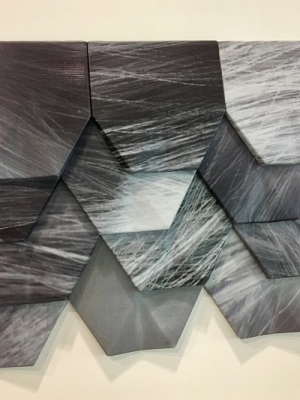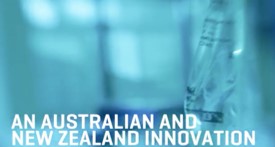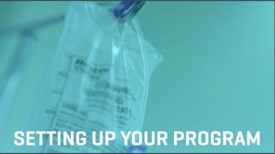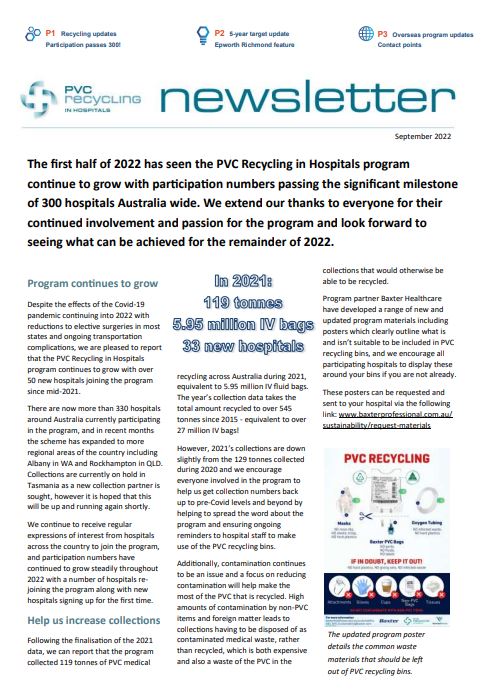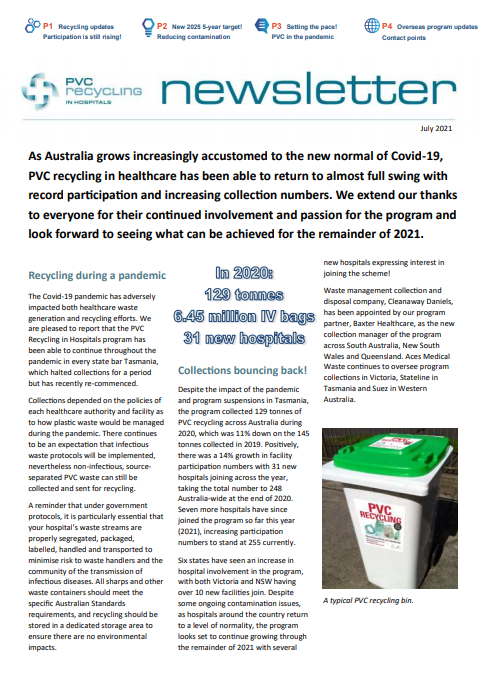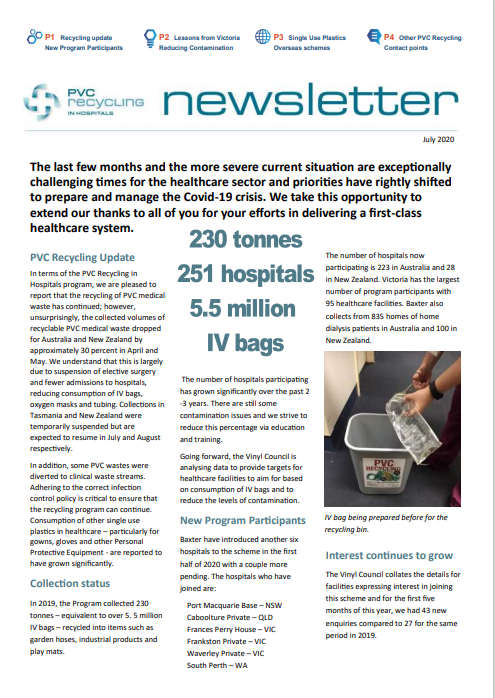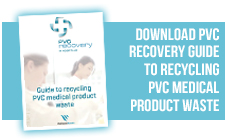Vinyl Council secures government funding for new ‘TexBack’ PVC composite recycling scheme
The Vinyl Council of Australia (VCA) and its project partner, Specialised Textiles Association (STA) have secured Government grant funding of nearly $350,000 to further research into the recycling of waste PVC and polyester composite textile products in Australia.
Their TexBack project is one of only 15 successful grant applications (out of a total 190 submissions) and will receive $349,850 from the National Product Stewardship Investment Fund (NPSIF). The Government’s funding program was launched to promote and stimulate shared action for everyday products with a focus on working to reduce waste generation and increased resource recovery.
‘TexBack’ is an industry-driven initiative which aims to steward polyvinyl chloride (PVC)-polyester (PES) composite textile products and waste which are currently not recovered in Australia.
The Morrison Government’s grant will fund the development of the business case for a national product stewardship scheme for textiles such as grain covers, tarpaulins, advertising banners, tents and marquees, roofing and grounds sheets, truck tarps, marine fabrics, swimming pool liners and upholstery fabrics. The project covers a range of activities, including testing of a new chemical separation technology, that will enable the specialised textiles and vinyl sectors to address the growing concerns of waste ending up in landfill.
The NPSIF has projected 1.5 million tonnes of waste to be diverted from landfill through the initiative and will further boost the economy by creating more than 560 potential jobs.
Developing a uniquely Australian solution will pave the way for the establishment of a new, industry-led product stewardship scheme that recovers a complex local waste stream, reprocesses it within Australia and supports the local manufacture of an innovative recycled content PVC building product being developed here, with export market potential. Local markets for recovered polyester will also be sought.
Welcoming the grant, the Vinyl Council of Australia’s PVC Stewardship Manager, Jan van de Graaff said: “TexBack will build on earlier VCA-led research into potential recycling options of PVC coated fabrics conducted over the past four years.
“This grant now gives VCA and STA a real opportunity to collaborate to engage the textile sector in developing a viable scheme for recovery and reprocessing of this waste stream, particularly as there is a potential end-use for the material that will lead to manufacturing of a completely new durable building product in Australia.”
Ana Drougas, Executive Office for the STA said “We are excited to be working with the VCA in an Australian first project to pilot the introduction of innovative and uniquely Australian world-leading PVC Separation technology. We acknowledge and commend the Commonwealth Government for elevating the status of product stewardship as a means of addressing environmental sustainability, growing jobs and the economy.”
In announcing the grant recipients, Minister for the Environment, Sussan Ley said: “We have made it clear that industry needs to take action for their waste. We are investing $10.5 million to seed 11 new and expand four existing industry-led initiatives that will make a practical environmental difference and it is great to see industry respond strongly to our call.”
“Our seed funding, along with the reforms in our Recycling Act, empowers industry and product experts to take more responsibility for their products,” said Hon Trevor Evans MP Assistant Minister for Waste Reduction and Environmental Assistant Minister.
“The grants were six-times oversubscribed which clearly shows the appetite in Australia for putting the power of recycling into the hands of businesses and consumers.”
For more information on the funded product stewardship schemes, visit: https://www.environment.gov.au/protection/waste-resource-recovery/product-stewardship/national-product-stewardship-investment-fund
Vinyl Council of Australia welcomes Federal Government’s A$1 billion recycling plan
The Vinyl Council of Australia welcomes the Federal Government’s commitment of $190 million into a Recycling Modernisation Fund (RMF) that is expected to ‘drive a billion-dollar transformation’ of Australia’s waste and recycling capacity.
The RMF will support innovative investment in new recycling infrastructure to sort, process and remanufacture materials, including mixed plastics.
“We believe this funding is much needed, well targeted and an excellent opportunity to refine the current systems,” says Sophi MacMillan, Chief Executive of the Vinyl Council of Australia. “Australia lags Europe and numerous other countries around the world in terms of sorting, recovery and recycling of mixed plastics and this fund has the potential to help bridge this gap.”
The Vinyl Council has long been calling for this waste to be sorted more thoroughly, enabling plastics such as vinyl to be recycled.
The third most commonly used type of plastic, vinyl (or PVC as it is also known) is used in virtually every sector of the economy from healthcare devices, consumer goods, food and agriculture to education, building and infrastructure. Due to its excellent durability, vinyl is mostly used in long life applications but also some niche packaging applications for its specific functional properties. Although relatively small volumes present in the waste stream annually, these low volumes have often mitigated against investment in developing collection, sorting, and processing infrastructure.
The Vinyl Council believes new investment is needed in a range of systems and technologies to enable recovery, material separation and recycling across our communities and sectors, as well as improved policy drivers that address and incentivize the system holistically from managing waste as a valuable resource to use of recyclate in well-designed, high value, new products.
Since 2002, the Vinyl Council’s PVC Stewardship Program, which commits participating companies to strive for continuous improvement in the environmental footprint of PVC products, has encouraged improved recycling practices for vinyl products in Australia. Signatories have committed to using recycled PVC in new products, particularly in industrial, building and infrastructure products, as well as minimising production wastes and packaging waste sent to landfill.
Annual reporting has found the amount of PVC being recycled by local manufacturing Program signatories grew for a third successive year in 2019 and is now more than double the amount used in 2016.
Ensuring sufficient, consistent local supply of quality recyclate for these manufacturers going forward is a challenge. The Vinyl Council is optimistic that the funding package announced by the Honourable Sussan Ley, Minister for the Environment, will help address this and enable the vinyl resource stream to be retained within the productive economy.
“As our core purpose is to enhance the industry’s opportunities for sustainable growth, we have been working with members and stakeholders to improve PVC recycling,” MacMillan explains. “Our PVC Circularity Taskforce brings together industry and government representatives to drive the industry’s circular economy objectives.
“Working with this forum and with the support of the Federal Government and interested State jurisdictions, we believe we can fast track new technologies that produce suitable clean and sorted PVC for remanufacture locally”, she adds.
Further investment in source separation of wastes and secondary sorting facilities would support the recovery of, for example, rigid PVC packaging materials, which are readily recyclable but often not separated from the co-mingled plastics waste stream.
“We look forward to mobilising and realising these opportunities with interested State Government agencies to improve environmental outcomes and stimulate employment, particularly given the current economic challenges,” MacMillan adds.
“Our members are committed to the circular economy, which has the opportunity to grow substantially if all levels of government harness their purchasing power to support those companies that are active participants in product stewardship schemes and are manufacturing recycled content products.”
Recyclable PVC plays an important technical role in packaging
Versatile and recyclable, PVC (vinyl) provides significant benefits as a specialist packaging material; yet recovering this material for sustainable reuse presents challenges. Sophi MacMillan, Chief Executive of the Vinyl Council of Australia offers some practical solutions.
For more than half a century, PVC or vinyl has been used on a global basis to meet specific functional food and beverage packaging needs. It suits many different food types, offering excellent clarity, unsurpassed physical properties, including heat tolerance, controllable gas and moisture vapour transmission capabilities and exceptional sealing performance.
Most vinyl is used in long life products, particularly building products from pipes, cabling and flooring to window frames and wall profiles, all of which are recyclable. Vinyl used in packaging – such as bottles, thermoformed punnets, pharma blister packs and cling films - represents about 6% of the material’s usage in Australia.
In these applications, vinyl plays an important role in protecting food from contamination and keeping it fresher for longer, while helping to reduce unnecessary food waste. It also protects a variety of high value consumer products, from pharmaceuticals to toys, razors and batteries. In healthcare, vinyl is used in many critical medical items, such as intravenous fluid bags and oxygen hoses. Although a small volume polymer packaging material, it has specific, necessary uses with a relatively low environmental footprint compared to alternatives.
Without doubt, vinyl has revolutionised the way we live our modern lives, helping to deliver safer healthcare, protecting our food and delivering drinking water. Given the high profile of plastics in the media, attention must focus on how we treat this recyclable material at end of life and recover it for beneficial reuse, including energy.
Post-consumer rigid PVC packaging is collected by most local councils around Australia. With existing infra-red sorting technologies, it can be sorted into a defined stream, reprocessed and used as recyclate for use in new products manufactured in Australia. However, at just over 5% of all plastic packaging materials (industrial and consumer) used in Australia, vinyl packaging is only a small proportion of total household packaging waste and is often considered uneconomically viable to sort and recycle.
The 2017-18 recycling rate of PVC packaging waste in Australia is reported to be 7.2% - which is low when compared to the overall average rate of 20.6% for all plastic packaging. (Source - 2017-18 Australian Plastics Recycling Survey published by Envisage Works, 30 January 2019). Nevertheless, clean, separated vinyl waste has value and collection has been actively encouraged by industry.
Clean, separated vinyl waste is relatively easy to recycle, requiring less energy for reprocessing than all other polymers. Using recycled vinyl in new products replaces virgin material and reduces carbon emissions associated with manufacturing virgin vinyl by about 80 to 85%, significantly lowering the carbon footprint of new vinyl products.
While technology exists to identify and sort PVC, few Materials Recovery Facilities (MRFs) are currently operating these systems because of ‘low volumes’. Yet substitution of a small handful of PVC packaging items would almost certainly lead to higher environmental impacts and higher waste volumes in terms of food waste, product damage or alternative non-recyclable composite packaging materials. It will also not remove PVC entirely from the waste stream, so an effective solution to remove PVC ‘contamination’ would be required regardless.
In my view, we need to consider whether the system of use is ‘open’ or ‘closed’ and how these waste plastics can be collected and recovered effectively in both systems for processing into new products, giving it a value as a raw material.
Examples of a ‘closed’ approach might be a major event, an airline or a hospital, where all the plastic waste can feasibly be collected, sorted, segregated and ultimately recycled as single, clean polymer waste streams. An excellent example of PVC packaging being collected and recycled is that of IV bags in healthcare. Schemes in Australia (our PVC Recycling in Hospitals Program), South Africa, Thailand and the UK successfully demonstrate that this material can be separated at waste source, collected and recycled into useful new products.
Conversely, in an ‘open’ system, such as take-away restaurants, all ‘control’ of these waste plastics is lost once single-use plastic walks out the door.
As a material that meets so many of our modern-day needs effectively, we should give careful consideration to how we treat and reuse PVC at end-of-life.
Solution options should cover:
- Separating PVC at source in ‘closed’ consumption systems to achieve a clean waste stream, such as the hospital PVC recycling program. This requires committed collaboration by brand owners, users and the PVC packaging industry to explore the feasibility of establishing collection and recycling schemes, and ultimately, end markets
- Using existing or new techniques and technologies to better separate PVC from co-mingled waste streams at a greater number of Secondary Sorting Facilities around the country, after the removal of higher volume PET and HDPE
- Researching, assessing and supporting the commercialisation and adoption of new technologies – such as chemical separation – to improve production of clean, single material streams for reprocessing
- Developing Waste to Energy projects for co-mingled residues
Demand is growing from manufacturers to increase the use of vinyl recyclate and signatory companies of our long-established PVC Stewardship Program are publicly committed to using recyclate in new products where standards permit.
Through greater collaboration between industry, manufacturers and the wider waste and recycling sector, the vinyl industry can be part of the solution and transform our plastic waste into a sustainable future resource.
Research paper on vinyl banner recycling published
A paper by one of the Vinyl Council's research partners, Dr. Sagar T Cholake, Research Associate, Centre for Sustainable Materials Research & Technology, University of New South Wales, has been published in the journal Resources, Conservation and Recycling Volume 136, September 2018 related to the Council's vinyl banner recycling project.
The paper, ‘Cost-effective and sustainable approach to transform end-of-life vinyl banner to value added product’ details a potential, new low-cost solution for waste PVC coated fabrics that does not require the separation of the PVC from the polyester fabric, overcoming a major barrier to recycling.
Testing by the UNSW team indicated that waste PVC-coated banners could be used to fabricate strong and durable composite panels for multiple indoor and outdoor applications and the paper shows one example of final product.
Life cycle analysis, conducted as part of the research, showed that replacing virgin PVC by recycled PVC from banner emits 78% less greenhouse gas emissions (kg CO2 equivalent).
Access this paper through the online journal here.
Banksia Awards: ‘PVC a good material for a circular economy’
The 2017 Banksia Award Judges have released their assessments of the PVC Recycling in Hospitals Program initiated by the Vinyl Council of Australia.
Describing the scheme as a ‘world first’, the judges praised it as an ‘excellent case study of an industry's response to keeping its social license’ and ‘embracing product stewardship’ as its means to achieve that.
The PVC Recycling in Hospitals Program was one of five Australian finalists for the Circular Economy category at the Awards night in November 2017. While not winning against tough competition in this category, the extremely positive feedback from the judges on our award submission has given the Vinyl Council of Australia team much encouragement to take this successful medical plastic recycling scheme - now operational in more than 120 hospitals in Australia and New Zealand - to even greater heights. The scheme is aiming to recycle a total of 2,500 tonnes per year throughout Australia.
They also commended the ‘good leadership shown by the health industry and good collaboration between industries’, as well as recognising ‘good circularity – PVC is a good material for a circular economy’.
Established in 2009, the program has overcome challenges to divert quality PVC from landfill. Two Vinyl Council members, Baxter Healthcare (multinational and Australian-based manufacturer of IV bags) and Welvic Australia (Australian compounder), collect and recycle IV bags, oxygen masks and oxygen tubing. These are turned into into durable, locally-manufactured products such as industrial and garden hose and children’s playground mats.
Recognising this, the judges stated: “The program stands out as a unique solution taking a waste stream that would historically go to landfill and re-purposing it thus preventing virgin components required for new products.
“The issue of plastics and chemical use in hospitals is enormous and the lack of sustainability focus in that sector is well-known. Seeing a project that brings change to that sort of culture is great. Overall it’s an innovative solution filling a niche that can be expanded globally and sets an example.”
Vinyl Council Chief Executive Sophi MacMillan comments: “We appreciate this valuable feedback and agree completely with the judges’ view that there is much potential to scale this and expand it across other industries. Watch this space!”
PVC Recycling in Hospitals scheme shortlisted for Circular Economy award
The Vinyl Council of Australia’s hugely-successful hospitals’ recycling scheme has been shortlisted in the Circular Economy category of the Banksia Foundation Awards 2017.
From its earliest beginnings in 2009, the scheme has overcome challenges to embrace more than 80 hospitals in Australia and 28 in New Zealand. IV bags, face masks and oxygen tubing are collected and recycled by two Vinyl Council members Baxter (multinational and Australian-based manufacturer of IV bags) and Welvic (Australian compounder).
Significant investment and commitment by these two companies and the Council has helped the PVC Recycling in Hospitals scheme to flourish and divert quality PVC from landfill into durable, locally-manufactured products. These include industrial and garden hose in Australia and children’s playground mats in New Zealand, which are exported to Australia and around the Pacific.
It is also being replicated round the world. For example, in the UK 11 hospitals are participating in the growing RecoMed PVC recycling scheme with high-quality medical grade plastic being recycled into horticultural products.
The Vinyl Council’s PVC Recycling Project Manager, Helen Millicer said: “We are thrilled to have been shortlisted for this sustainability award. In terms of significance, this Australian initiative shows that quality material from hospitals can be safely recovered and reprocessed to become durable, locally-made product in Australia and in other parts of the world.
“There is no limit to the demand for this high-quality material as a substitute for virgin in Australia and New Zealand. It’s a great step forward in terms of sustainability for PVC and the environment. It’s a valuable raw material resource that can be given a useful ‘second life’ in new products and that’s good news all round!”
The scheme is aiming to recycle a total of 2,500 tonnes per year throughout Australia. Currently, monthly PVC quantities from both hospitals and home patients (Australia & New Zealand) produces enough for 95 km of garden hose or 4500 cushioned play mats for children’s playgrounds. This displaces 14 tonnes a month of imported PVC resin and additives, and reduces greenhouse gas emissions associated with the PVC in new products by 80 percent.
Winners will be announced at the Banksia Awards ceremony in Sydney on 1 November.
Novel concepts ‘advertise’ innovative ways to recycle waste vinyl
Imaginative end product concepts for using waste PVC advertising banners have been displayed at Waste Expo Australia, a business-to-business exhibition for waste, recycling and sustainability in Australia.
Roof shingles, pallet slip sheets, floor tiles and a design for a water storage/seat for garden drip irrigation were among the inspirational ideas presented by Monash University at the event, held from 11 to 12 October 2017 in Melbourne.
The designs were created after the Vinyl Council successfully obtained funding from the NSW Environment Trust to identify ways to reprocess advertising billboard skins and find potential end markets for the recyclate.
Currently around 500 tonnes of this material are disposed to landfill each year, as well as larger quantities of grain covers and truck tarpaulins totalling around 5,000 tonnes per year.
Commenting on the designs, Vinyl Council Chief Executive Sophi MacMillan said: “A series of workshops and forums with the Outdoor Media industry, Monash University, UNSW and manufacturers have delivered excellent results.
“As well as producing some fabulous ideas for recycled PVC, the concepts reflect perfectly the Waste Expo principles of ‘Where today’s waste becomes tomorrow’s future’.”
Other ideas for using the reprocessed material include a woven fabric for should bags, skateboard skins and sound attenuation barriers.
Finding solutions to reprocessing the waste PVC involved close collaboration between industry associations, manufacturers, industrial designers and chemical engineers.
“As a priority recycling area, we are very encouraged by these early results,” added Sophi. “A new reprocessing method has been identified, which is proceeding to international patent, and a low-cost reprocessing method has been identified for some suitable product, leading to 2 tonnes recycled material per month.”
In Healthcare - PVC Recycling in Hospitals
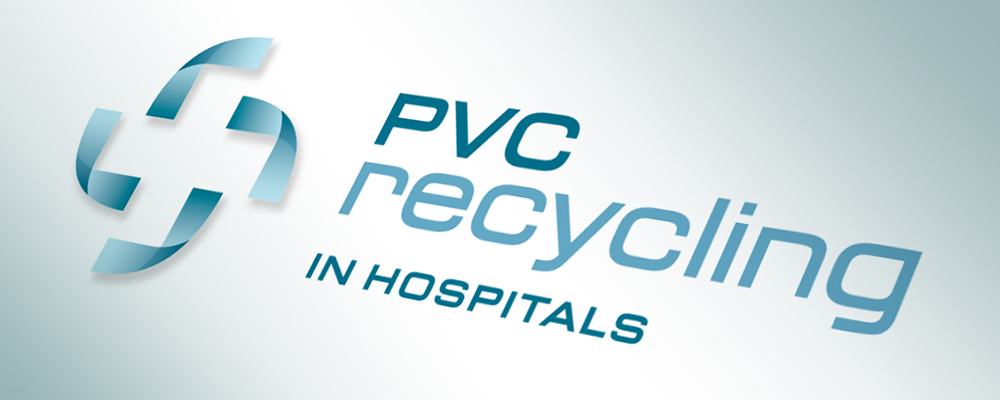
PVC Recycling in Hospitals
The PVC Recycling in Hospitals program collects specific, used PVC medical products for recycling safely into useful new products.
Initiated in Australia by the Vinyl Council in collaboration with staff at a metropolitan hospital, the program collects PVC IV bags, face masks and oxygen tubing it is now operating in over 280 hospitals and healthcare facilities in Australia and New Zealand.
These PVC, or vinyl, medical products are readily recyclable due to the quality and transparency of the polymer and the large number of items in use daily. Over 50 million IV bags are consumed annually in Australia alone. Together with the face masks and tubing, at least 2,500 tonnes of locally recyclable material is available for collection and reprocessing.
A 300 bed hospital could easily recycle around 2.5 tonnes of these quality PVC products each year.
Plastics are a significant share of hospital general waste currently sent to landfill at a cost to the hospital, and PVC is the most commonly used polymer in medical products.
At the initiative of an anaethetist, the PVC Recycling in Hospitals program started as a pilot program in 2009 at Western Health, Victoria. The Vinyl Council developed the program in collaboration with Western Health, and is proud to support its growth with members including Baxter Healthcare, Welvic Australia and transport companies and government agencies. It has grown to service hospitals in across Australia, and in New Zealand. It is aslo winning awards: 2017 Banksia Foundation Circular Economy Finalist; 2016 Victorian Premier's Sustainability Awards Finalist, and our participating hospitals are winners in the Victorian Awards in 2016 and 2017. Inquiries continue to come from across Australia and the world.
The material is reprocessed by Vinyl Council member, Welvic in Australia and MattaProducts in New Zealand. It is primarily used in new industrial and garden hoses and play and safety mats for children and workplaces.
Each tonne of recycled PVC will replace about one tonne of virgin PVC compound in new products, consuming 80% less energy and reducing carbon emissions.
Start PVC Recycling in Your Hospital
|
Watch these videos to learn how and why to set up your program |
Read Latest Program News:September 2022 Newsletter
July 2021 Newsletter
July 2020 Newsletter
Subscribe to Medical Newsletter |
Resources to help set up your PVC Recycling program:The following booklet, training slides, poster and videos have been designed to help hospitals set up and implement PVC Recycling in Hospitals effectively and efficiently. DOWNLOAD the Fact Sheets for staff here DOWNLOAD the Training slides here DOWNLOAD the PVC Recycling Poster here The Business Case for PVC Recycling, prepared by the Victorian Department of Health and Human Services, April 2017. |



